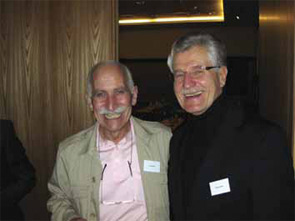David S. Hallegua, MD, assistant professor of medicine at Cedars-Sinai/UCLA School of Medicine in Los Angeles and past chair of the Spondylitis Association of America’s (SAA) Board of Directors, was part of the ASAS/SAA group convened in 2004 to generate a U.S. Food and Drug Administration (FDA) guidance document for conducting trials in AS.5 In that meeting, he says, the group used many of the measures that ASAS had developed in the previous 10 years. “The work they had already done helped the success of our meeting considerably,” Dr. Hallegua says. Another strength of the ASAS definitions of improvement in clinical trials: “While there is some emphasis on physician global assessment,” he says, “most of the measures, such as pain, inflammation, stiffness, and function, are patient derived.”

Giant Leap Forward—Changing the Dogma
As the group has strived for common-denominator assessment instruments, screening technology has also been a focus. For example, the advent of magnetic resonance imaging (MRI) opened the door for diagnosing patients earlier in the course of their disease. The New York criteria delay diagnosis until there are evident radiographic changes, a sequence that can take six to 10 years. Dr. van der Heijde explains that ASAS has made major efforts to propose clear definitions for abnormalities on MRI, both for the sacroiliac joints and the spine for use in clinical practice. For research purposes, various scoring methods for assessing MRI of the spine were compared, again with OMERACT endorsement. Recently, she says, the ASDAS has been published (see ASAS Timeline below). The ASDAS is a new disease activity score that has been proven to perform better than the existing disease assessment measures. The latest step was the definition of the cutoffs for clinically important improvement, major improvement, and the states of inactive disease (moderate, high, and very high disease activity). Again, these were endorsed by OMERACT at this year’s OMERACT 10 conference.
At their initial meeting in Amsterdam during the European League Against Rheumatism (EULAR) congress in 1995, the group’s aim was to devise core sets with which to assess patients in the clinical setting. But, as Dr. Reveille points out, “they were so successful in doing this that they began to look at the diseases themselves, forming a broader definition of the disease phenotype.”
Six years ago, Drs. Rudwaleit and Sieper proposed that the group embark on devising new criteria for spondyloarthritis. The new classification criteria for axial spondyloarthritis have been one of the major advances of the group’s rigorous, systematic approach and international consensus, says Dr. Maksymowych. “The combination of these small steps has really led to a gigantic step forward in terms of our ability to diagnose and manage this disease.”
